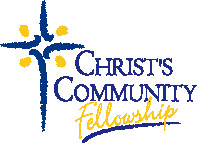|
James' Articles  Monday, November 26 2018
This is Ein-Gedi Day 8 will also include one of the top attractions for natural wonders, Ein-Gedi (meaning “spring of the kid [goat]”). It has also been known as “En-Gedi,” “Engedi,” “Engaddi,” “Áin Jidi (Arabic),” “Hazazon-tamar,” “Hazezon Tamar,” “Hatzatzon Tamar,” and “Tell el-Jurn.” An oasis on the edge of the Dead Sea, about 35 miles southeast of Jerusalem, Ein-Gedi is fed by a natural spring that emerges from the lower section of the cliffs there. Its antiquity has been attested to the discovery of a temple that dates to the 4th millennium BC. During the Herodian period (50-60 AD), it served as a military stronghold. The Romans built a bathhouse there and the Jews built a synagogue (6thc AD). What makes this particular place so outstanding, is the incredible amount of water produced in an otherwise terribly desolate region, which was allotted as a part of the wilderness district of Judea. In biblical history, Hazazon-Tamar was an Amorite stronghold when Abraham rescued his nephew Lot from an alliance of 4 kings. David took refuge in Ein-Gedi while hiding from Saul and his search parties. At a later date, the Moabites, Ammonites, and Meunites crossed the Dead Sea and encamped in Ein-Gedi to invade Judah. King Jehoshaphat declared a fast and prayed for the Lord’s deliverance. God answers his prayer and gives word that the King and Judah need not worry about the encroaching enemies. Thus, the invading armies began fighting against one another and killed each other before organizing a plan against Judah. The Song of Solomon mentions Ein-Gedi pertaining to the beauty of its henna blossoms. Henna is presumed to have been the plant that the fragrant flower was used in the production of perfume. Ovens and pottery that have been excavated at Tel el-Jurn were used for the perfume. In terms of prophecy, many look to Ein-Gedi as the place where fulfillment will come to the turning of the Dead Sea into a viable freshwater lake. The water is to stream from the temple after the restoration of Israel. Historical records speak of the palm trees, dates, groves, vineyards, balsam, resin, and medicine in the area. During the Hellenistic and Roman periods, it is believed that Ein-gedi had been occupied by Edomites (Idumeans) who had converted to Judaism after being conquered by John Hyrcanus (2ndc BC). It is also considered plausible that a Ptolemaic town was taken over and made the capital of the toparchy under King Herod. During the First Jewish War against Rome, Josephus recorded that the Sicarii (cf. “This is Masada”) Zealots had seized Masada and made a raid on Ein-Gedi during the Feast of Unleavened Bread. They slaughtered the people and plundered the city. Pliny said that after the Romans destroyed the Temple in Jerusalem, Ein-Gedi was left in ruins. During the Second Jewish War, a Jewish leader of the population in En-gedi named Simon Bar-Cochba tried to rally the people to come to the aid of those battling against Rome. This drew Roman attention to the town and the residents there fled to the mountain caves nearby. The Roman troops encamped above them and held them to their deaths. Through the Byzantine period, little was recorded about the area except the confirmation of a large village located there. After the Muslim invasions of the 7thC AD, it was primarily used as a bedouin occupancy. A kibbutz was built after Israel reclaimed its statehood.
|



